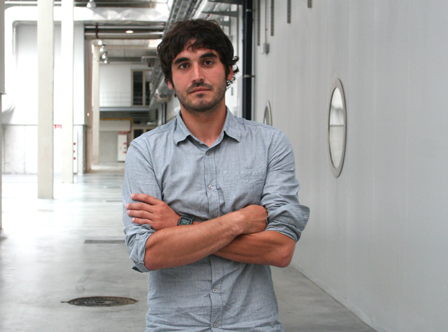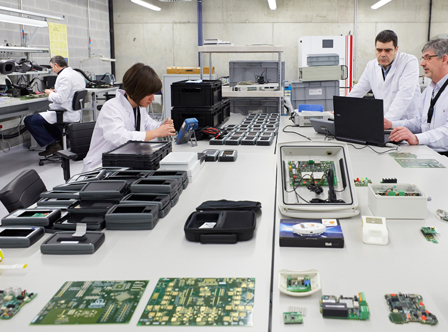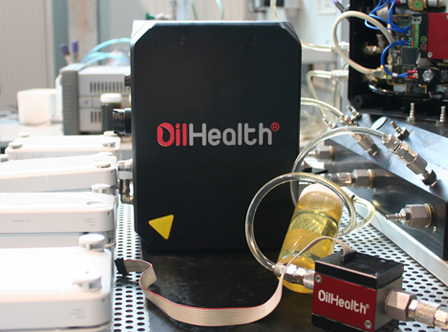THE EXPERT'S VIEW



Behind the unique term Product Engineering or Smart Integrated Systems (SIS) lies a set of solutions and products that are present in and are contributing to a number of our everyday activities. Starting with electromedicine systems for clinical self-diagnosis, pressure sensors for tyres or for lubricating oil quality in the automotive sector, and going on to smart balloons or cycling helmets with impact detection, we can find examples of SIS in virtually all the industrial and consumer fields of application.
Despite the fact that SIS attend to an increasing diversity of new products and services in key sectors like health, avionics or manufacturing, these systems have a series of common features that define them. SIS interact with their surroundings (sensing or actuation) by means of physico-chemical interfaces that function autonomously, they offer dependable, robust operation, they are miniaturised, compact and built-in systems and normally low cost and they are equipped with some communication system enabling them to exchange standardised information with users or with other SIS.
So we can conclude that SIS solutions are the result of the miniaturisation and systemic integration of a whole range of technologies, functions and materials. So we find that these SIS incorporate, in a unique way, technologies like micromechanics, magnetics, microfluidics, photonics, electrochemistry, biochemical principles, acoustics, algorithmics and electronics and communications to build solutions for specific problems raised by the market.
The role of electronics in products of this type is crucial since, irrespective of their technological base or final function, the electronic design (hardware, firmware and software) is the enabler of most of their principle blocks like communications, power supply, processing and data storage capacity, and user interface.
In order to provide SIS with even greater degrees of autonomy, mention should be made of the current and future importance of concepts like ease of use and installation, wireless communications and the power supply systems of Energy Harvesting, which will be underpinning solutions capable of operating semi-perpetually without the user having to intervene. Pacemakers powered by the heartbeats themselves that communicate their performance to the user’s smartphone are an example of this approach that we will very soon see turned into reality. These concepts are part of IK4-TEKNIKER’s Plug&Play&Forget® initiative.
Benchmarks in inspection and sensing microsystems
Nevertheless, the incorporation of heterogeneous technologies meeting not just technological but also market aims poses a considerable technical and organisational challenge for any company. The synchronising of multidisciplinary working teams, the pressure to cut development times in order to launch new products onto the market as soon as possible, the complexity inherent in the technological bases of the blocks that make up the SIS need to be managed efficiently throughout the design, development, validation and certification phases of the SIS.
After a decade involved in ongoing developments in the SIS line, like dairy product quality sensors, and wine and cider monitoring sensors for sectors like agri-food, or position sensors for magnetic levitation for the manufacturing sector, and dirt sensors for the glass panels in solar thermal plants (energy), among others, in 2011 IK4-TEKNIKER decided to consolidate a strategic commitment towards technology specialisation to boost the capacities for the development of SIS.
The main goals of this initiative centre on increasing efficiency when it comes to transferring validated proofs of concept on a laboratory scale as well as final solutions or products closer to their mass production stage. Efforts have been geared towards the multidisciplinary management of the heterogeneous integration of technologies and towards the methodological application of various techniques to modify the proof of concept towards solutions that are dependable, and can be manufactured, verified and certified, thus cutting development time as far as possible.
Having the technical capacity to tackle these multiple developments means that IK4-TEKNIKER is currently a benchmark in low-cost microsystems for inspection and sensing, by incorporating a photonic base (ultraviolet, visible and near infrared) or artificial vision embedded with high-precision micromechanical and optical solutions. Examples of success are the microINR® system by iLine Microsystems or the OilHealth® and OilWear® line of products by Atten2.
Transfer to the industrial base and the role of IK4-TEKNIKER
SIS represent the full paradigm of technology transfer from a scientific principle to a business reality in the form of a high-performance product that is innovative, differentiating and whose technology constitutes intellectual property that can be transferred to a patent.
Even though an SIS may be close to the final application, its success will only be possible if it has the collaboration of a key partner in the target sector, who, as the major promoter of the idea, is capable of presenting the market restrictions and requirements in terms of price, size, applicable regulation and certification, conditions of use, etc., which will constitute the key when it comes to driving forward and steering the evolution of the proof of concept towards the final product.
IK4-TEKNIKER’s commitment is translated into a capacity to support the industrial base so that it can conceive, design and manufacture innovative SIS solutions and products that will enable companies to compete internationally. IK4-TEKNIKER is approaching this assistance in a global, ongoing way by collaborating with companies in both directions, from the first phases of the design to the phases involving the certification and after-sales services of the products.
Success stories: The reality of innovative products
iLine Microsystems: microINR®
The microINR® device of the company iLine Microsystems is a unique example of the concepts covered by the term SIS and in which IK4-TEKNIKER has collaborated from the start. It is an electromedical device of the point-of-care type to monitor the coagulation index of patients receiving oral anticoagulation therapy treatment (Sinthrome type).
The satisfactory integration of heterogeneous technologies (the basis of their measuring principle), together with their autonomous, dependable, user-friendly functioning have allowed iLine Microsystems to offer the market certain competitive advantages which have put it at the cutting edge worldwide in this type of equipment in terms of features and business volume.
Sensors for measuring oil degradation: OilHealth® and OilWear®
The sensors in the OilHealth® and OilWear® suite represent the industrial side of the SIS applications developed by IK4-TEKNIKER. Their aim is to offer a solution for monitoring, on-line, the state of the lubricants used in large industrial equipment (wind turbines, gas turbines, etc.) in an autonomous, reliable and remote way, thus obviating the need to extract lubricant samples and then analyse them in the lab. The integration of heterogeneous technology (photonics, fluidics, micromechamics, chemometrics, electronics, etc.) has been a key aspect in building these products and meeting market expectations in terms of precision, dependability, size and cost.



